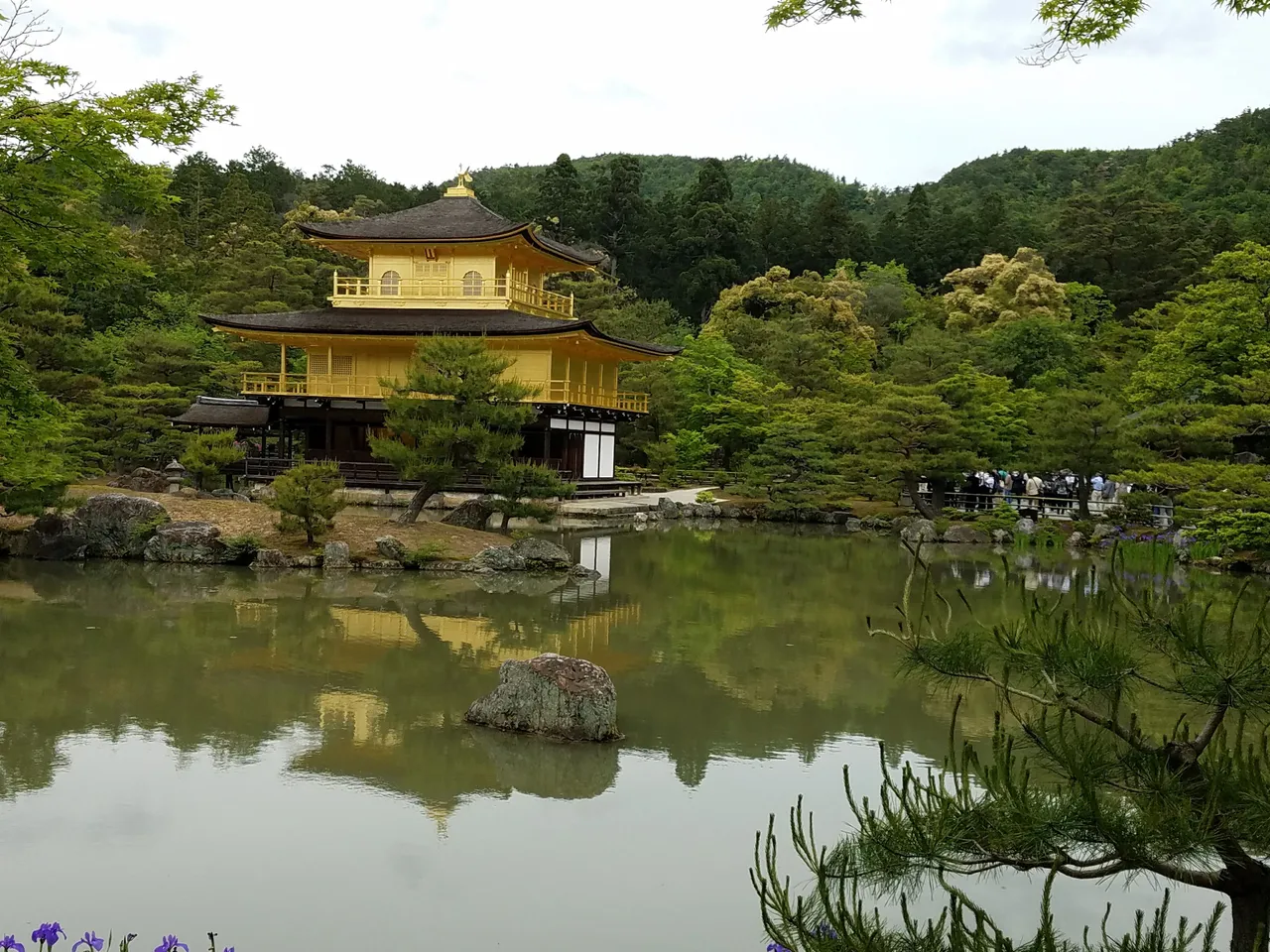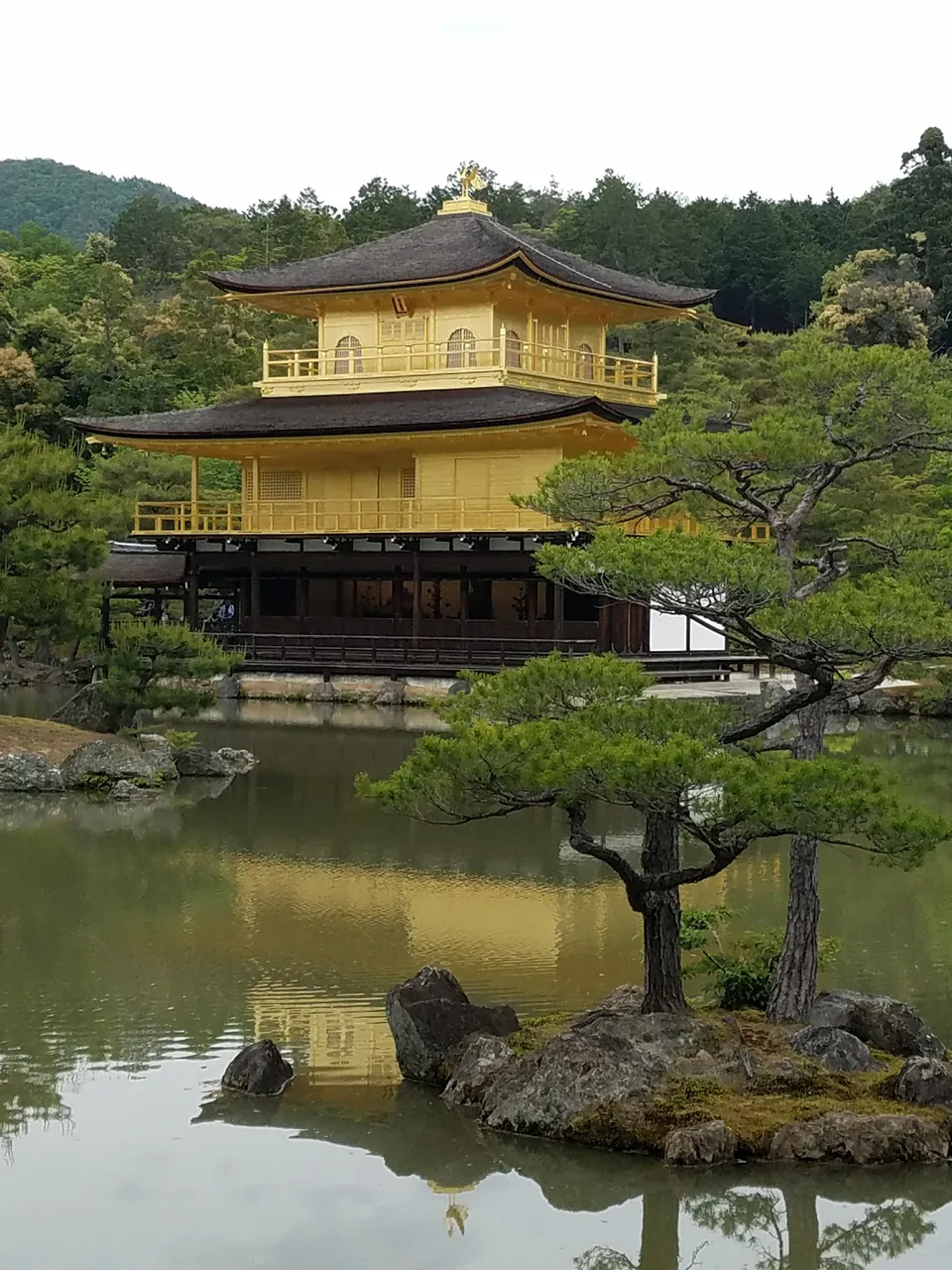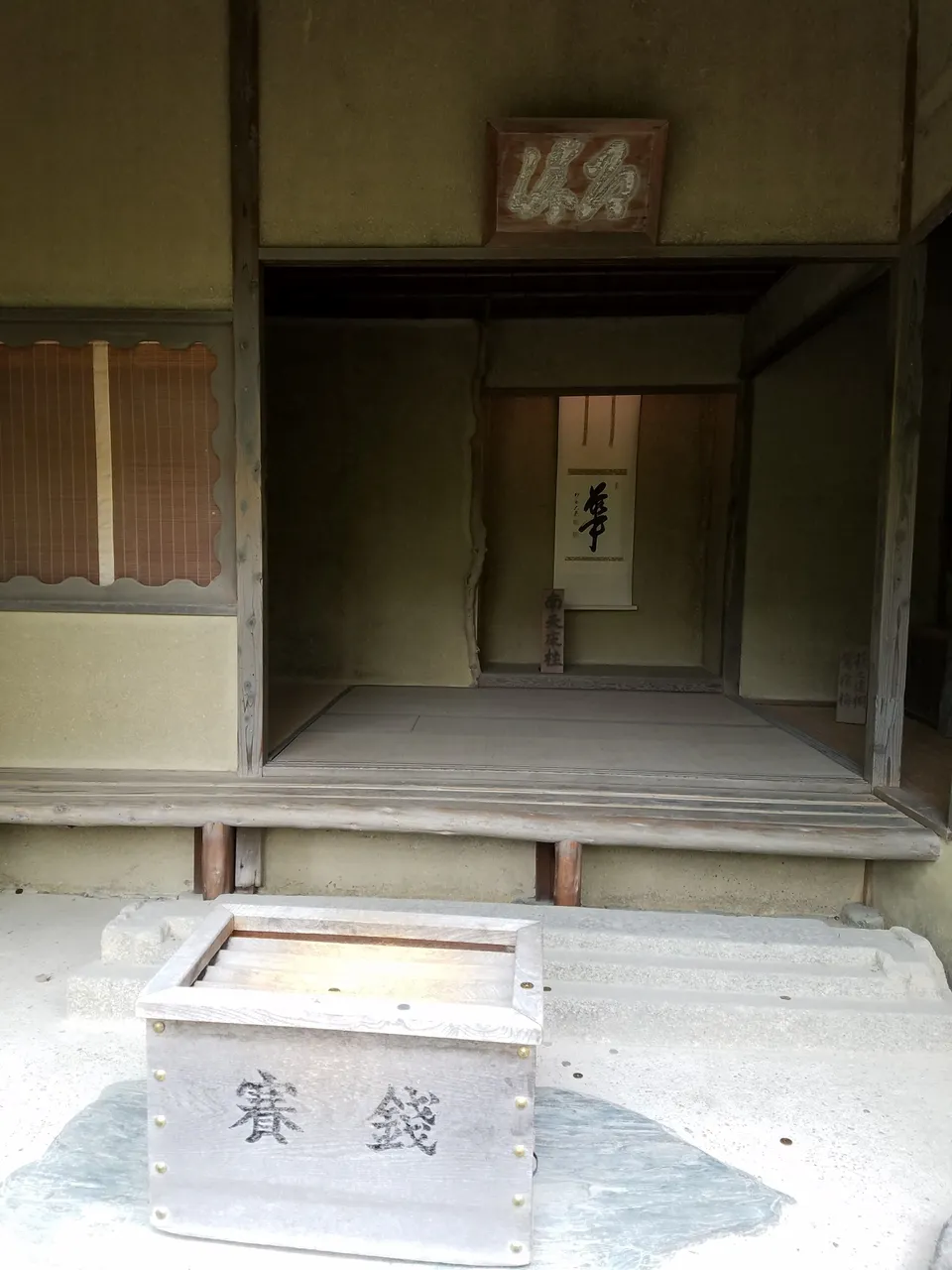Throughout Japan there are a number of cultural temples and symbolic areas that have been maintained for hundreds of years. One such place is Kinkaku-ji or Temple of the Golden Pavilion located in Kyoto, Japan. @SlickWilly and I had the pleasure of visiting the site back in May of this year.

The Temple of the Golden Pavilion is a Zen Buddhist temple which dates back to 1397. Unfortunately the structure I saw is quite a bit younger as the original suffered multiple burnings before its final reconstruction in 1955.
However, the renovations likely added to the beauty of the structure. During our visit it was a bit cloudy, but even then the sun reflected off the temple in such a way that my eyes were immediately drawn to it.

As you can see, the pavilion is made of three unique stories, each with a distinct architectural style. To learn more, I have included some links to Wikipedia.
- First floor - shinden-zukuri style and is referred to as The Chamber of Dharma Waters
- Second floor - buk-zukuri style and was named The Tower of Sound Waves
- Third floor - Chinese chán style and is called the Cupola of the Ultimate


This was a pretty popular tourist location in Japan but @SlickWilly and I still managed to get a shot together. While not pictured, believe me, we were surrounded by people!

Rikushu-no-matsu Ship Pine Tree

Nearby the temple is a 600 year old white pine tree that has been shaped to look like a boat. Its a bit hard to see at first, but if you imagine that the main "tree" is a large mast then you can see the deck jutting out beneath it. Beneath the deck you can see what is likely a rudder for the boat.
Golden Tea Room
On the trail leading out of the temple area was a simplistic tea room where it is said the Shogun and various royals would go to take tea.


Thanks for reading!
For a different take on our experience check out @SlickWilly post 👉 Visiting The Kinkakuji 金閣寺 Golden Pavilion In Kyoto - Highlights Of Traveling Japan
